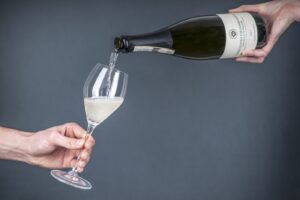Marco Simonit and Pierpaolo Sirch are two “grape preparatory” agronomists who have recuperated an antique pruning system and applied it to modern viticultural practices for maximum protection from disease and to prolong the life cycle of the grapevine. It is a plant by plant intervention with pruning on young vines, and the result is a vineyard that is productive for 50 years. The causes of the devastating infections in vineyards can have their origin in incorrect pruning practices caused by mechanized agricultural practices.
After 20 years of experimentation, since 2005, the two agronomists from the Friuli region have begun to divulge their “soft” pruning method to important winemaking companies throughout Italy: Gaja in Barbaresco, Ferrari and San Leonardo in Trentino, Bellavista in Franciacorta, and Biondi Santi in Montalcino are just some of the big names that have introduced this vineyard management system into the general practices at their vineyards.
The Simonit and Sirch project to give longevity back to the grapevine has now taken a further step ahead with the creation of a “pruning school” that will be inaugurated in February in the heart of the Chianti Classico region at the Enzo Morganti study center in Castelnuovo Berardenga (Siena), and at the University of Gastronomic Sciences at Pollenza. The goal is that of recuperating ancient pruning techniques, which, in the end, can determine the destiny of a grapevine when the interventions are done with the utmost respect for the health of the plant itself.
With the experiments conducted by these two agronomists (which began in 1988), the secret to the longevity of the grapevine has now been revealed. The importance of a correct pruning that does not provoke wounds is fundamental in determining the lifespan of the plant. The “tree” pruning method, for example, which is typical of the Mediterranean area, is particularly helpful for the longevity of the vine because the pruning is conducted when the wood is still young, up to two years of age.
“By pruning young branches the plant heals better, better resisting diseases and maintaining the health of the vine. To the contrary,” – noted Marco Simonit - “cutting older branches, from 3 years and up, leaves a wound that can compromise the circulation of the plant, also favoring a more likely entrance point for funguses that cause disease. The main difficulty in our research was that of transferring the old cutting techniques into modern viticulture, represented mostly by more intensive cultivation systems like Guyot…”.
The first course at Castelnuovo Berardenga was successfully held at the beginning of February and the second course in Pollenzo is set for 19 to 21 February. It is made of up two sections: 20 hours are dedicated to theory and led by Attilio Scienza and Marco Simonit, with the rest of the time dedicated to actual practice in the pruning of the grapevine branches, as well as leaf management further on in the spring.
Copyright © 2000/2026
Contatti: info@winenews.it
Seguici anche su Twitter: @WineNewsIt
Seguici anche su Facebook: @winenewsit
Questo articolo è tratto dall'archivio di WineNews - Tutti i diritti riservati - Copyright © 2000/2026








































































































































































































